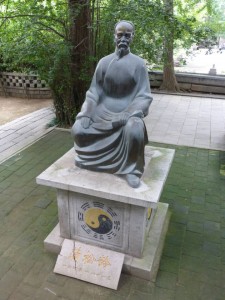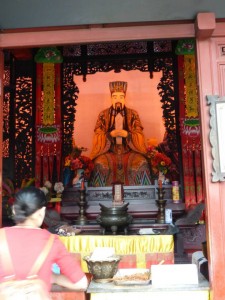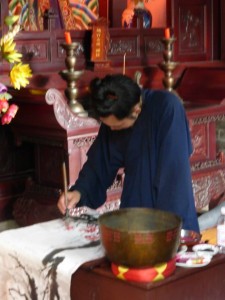
The final religion in the three-part series is the tradition of being at harmony with your environment. Taoism, as it is historically known, started to be called Daoism in the 1950s when the Pinyin system of transcribing Chinese characters to the Latin alphabet was developed. The tradition is based on the folk culture of China, permeating today’s society.
Who was Tao/Dao?
The creation of Taoism/Daoism is attributed to Lao Tzu, a Chinese philosopher of the 6th Century BC. Conflicting accounts of his life place him as a real and mythical character in Chinese history. Traditionally, it is believed Tzu was an official with the royal court during the Many Dynasties period. Here he had access to ancient texts to create the Daodejing or the Bible of Taoism/Daoism.
As a demigod, Tzu is believed to come to Earth through a virgin conception, being born already an old and wise man who lived 900 years. He embodied the Tao and traveled throughout ancient Asia revealing the way to reach a state of ecstasy after he spent years leading the life of a hermit in meditation and reflection.

Though Tzu never began any schools of his own, he did have disciples that continued to hand down his teachings until the first writings about him appeared in the 1st Century BC. The oldest form of the Daodejing dates back to bamboo slips in the late 4th Century BC. Today, various sects of Taoism/Daoism have emerged in his honor.
What is Taoism/Daoism?
In Mandarin, the word”Tao” literally translates to “way.” As in Buddhism, living a life dedicated to Taoism/Daoism principles can deliver believers to a state of enlightenment. The tradition shares many other similarities to Buddhism, such as the detachment from material possessions and appreciation for what you currently have.
There are two camps of Taoism/Daoism. Some view the tradition as a religion while others prescribe to only the philosophy. The philosophy and religion emphasize living a life of harmony through the main concept of non-action or wu-wei. Compared to the nature of yielding water, wu-wei is about going with the flow, allowing the universe to be without interruption of intention or force.

Along with this uninhibited flow, naturalness is also important in Taoism/Daoism. Especially relevant in Traditional Chinese Medicine, this value is practiced through treatment and prevention that comes from Earth-derived substances and body-flow exercises. In this vein, the Yin-and-Yang concept of balance is also found in the tradition.
Known as the Three Jewels of Taoism/Daoism, the core virtues of ci or compassion, jian or moderation, and bugan wei tianxia xia or humility are expected characteristics of any follower. These virtues have affected everything in the Chinese culture from health to politics.
Taoism/Daoism in China
Taoism/Daoism was officially recognized in China during the Tang Dynasty when the royal family claimed Tzu as an ancestor. The common family name Li also traces roots back to Tzu. The philosopher has been praised by various political affiliations throughout time: Anarchists believe his writings on “rightful power” form a basis for the concept while Libertarians praise his idea of individualism in society and smaller government to create social harmony. Through its non-aggression and non-authoritative stance, Chinese revolutionists have often drawn inspiration from Taoism/Daoism.

Like the other religions in this series, Taoism/Daoism has enjoyed periods of popularity and struggled through episodes of disfavor. Schools of the religion first began to appear in the 2nd Century. In 1956, the Chinese Taoist Association was officially created. It was disbanded during the Cultural Revolution but regained official status in the 1980s. Today, the CTA is on a mission to share the principles of Taoism/Daosim with the world.
Your thoughts on Taoism/Daoism?
Though it’s difficult to pinpoint a number of followers for the religion since it is intertwined with so many other traditions, the best estimates place about 400 million people worldwide practicing some form of Taoism/Daoism. What do you think of the religion? What would you want to know more about?
-Monica
